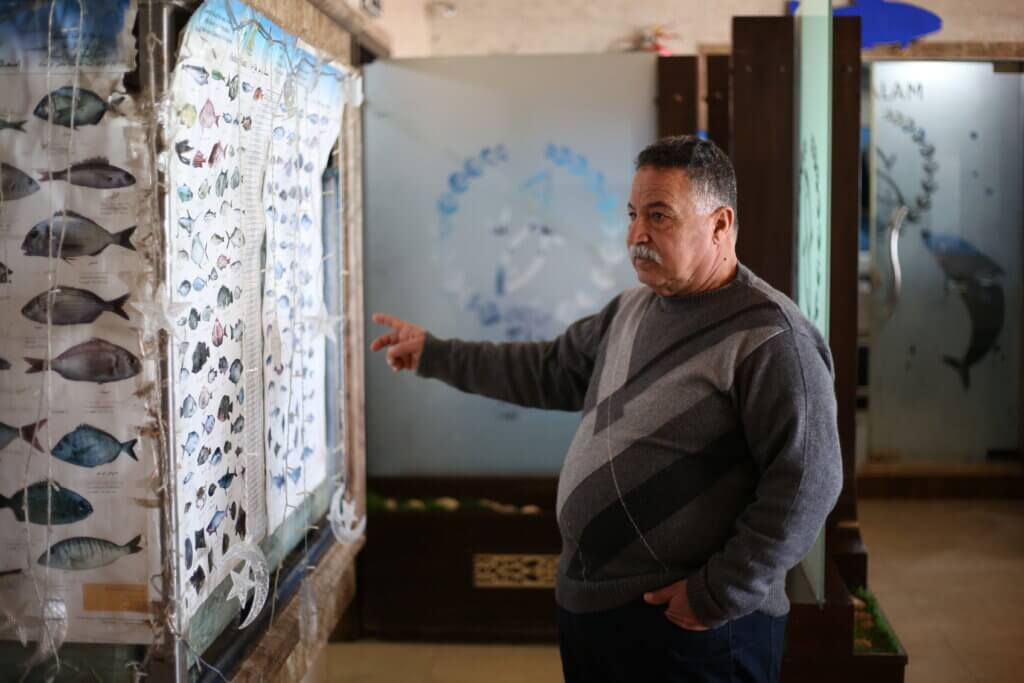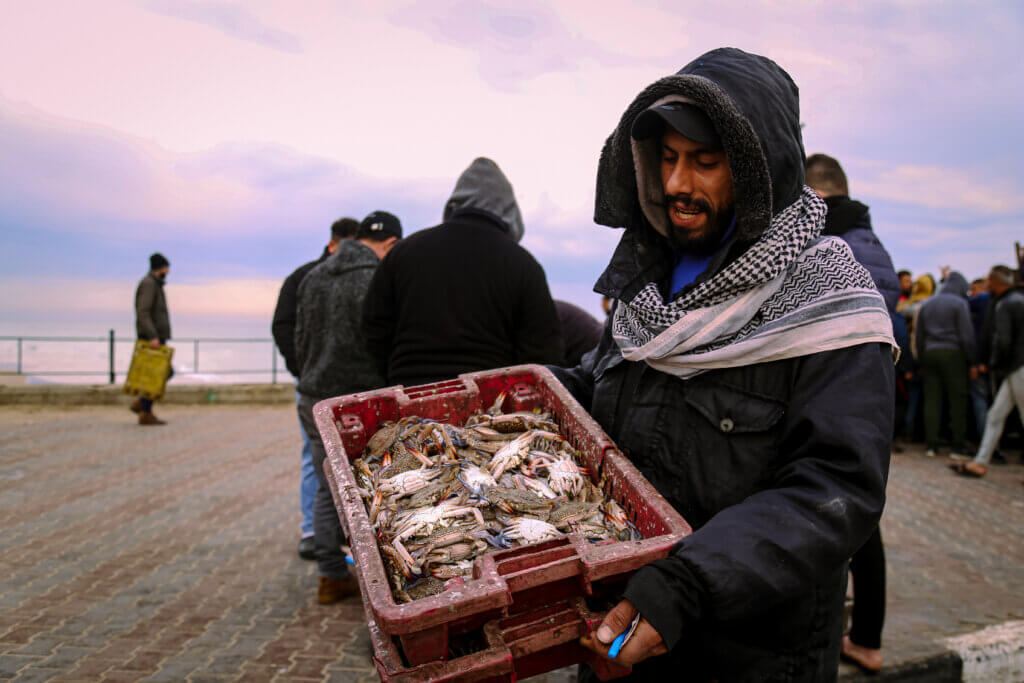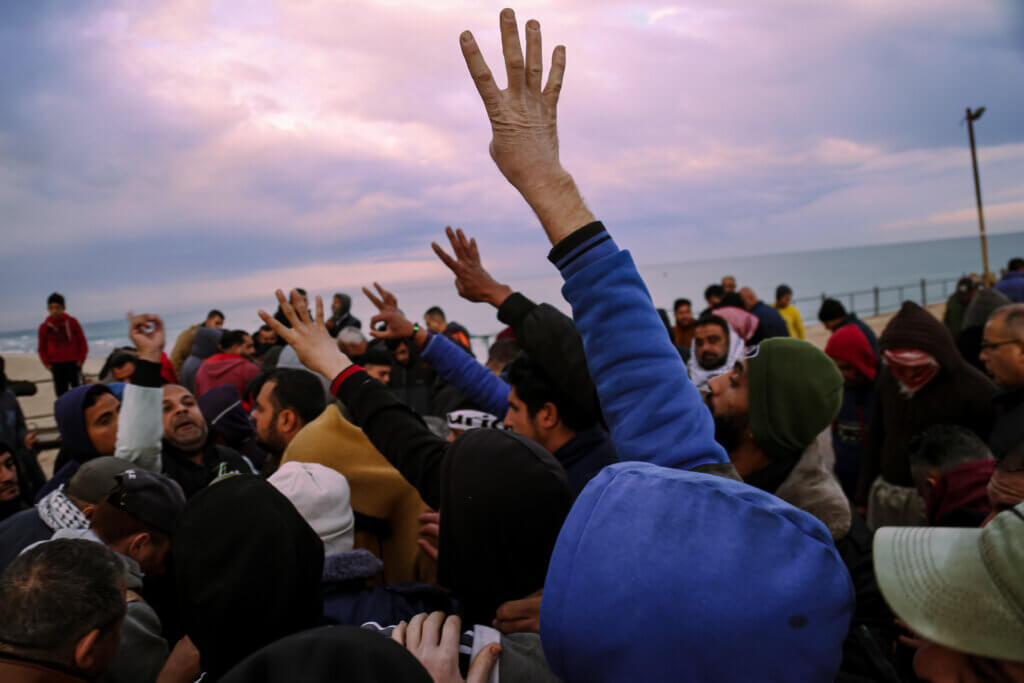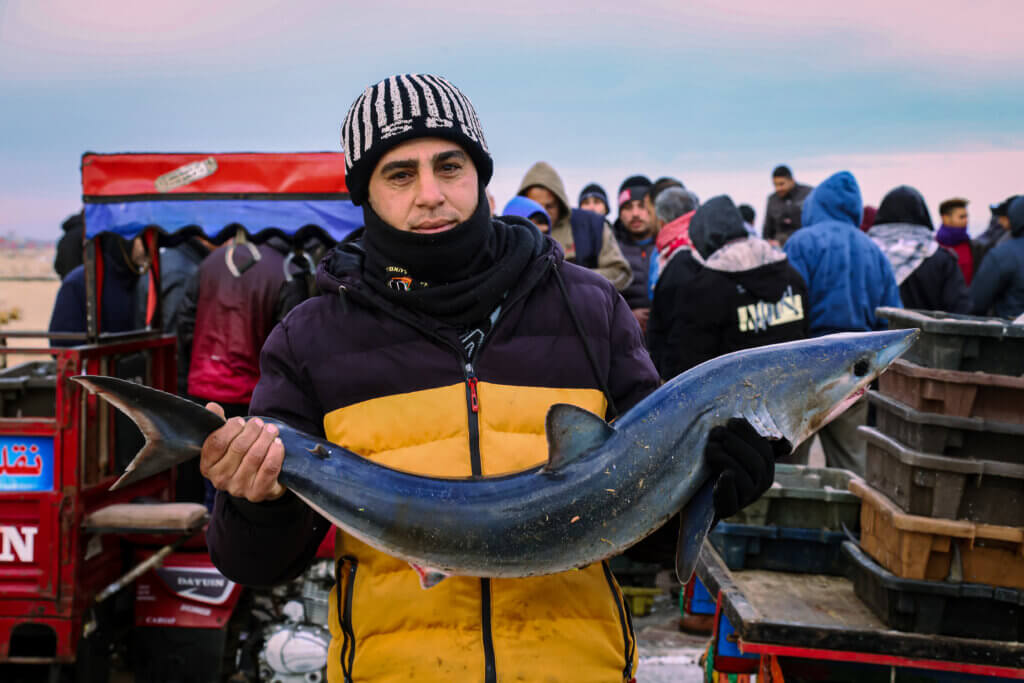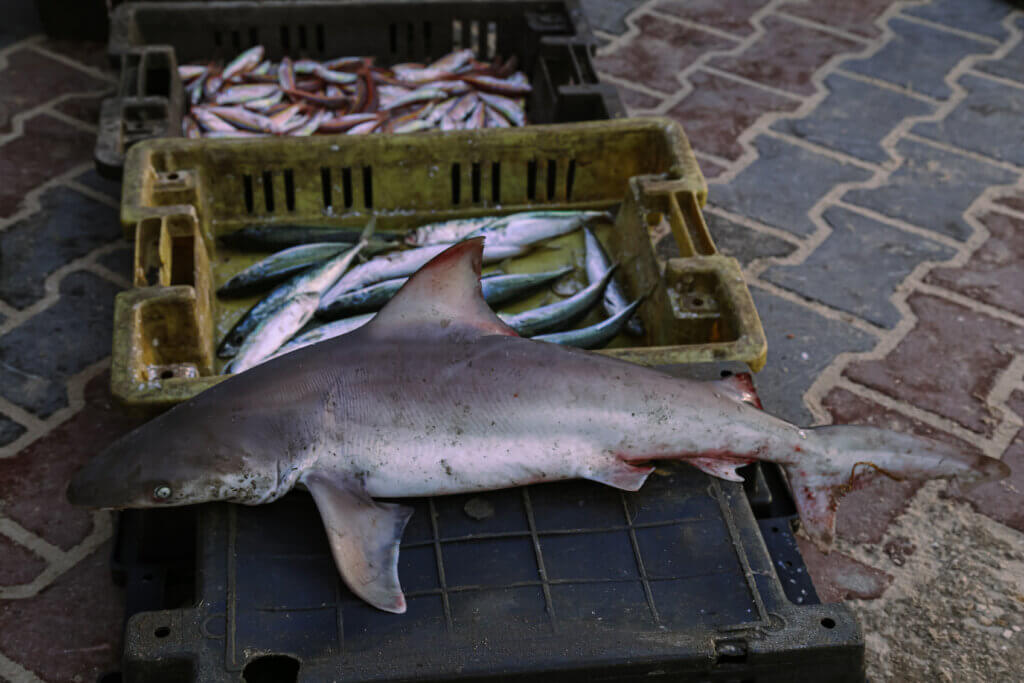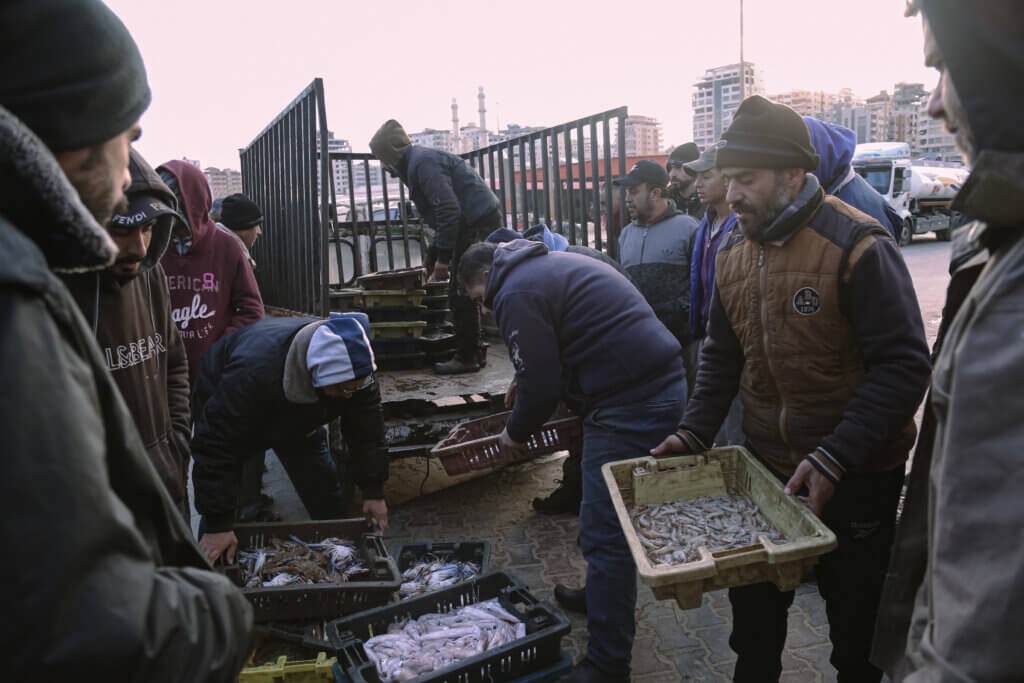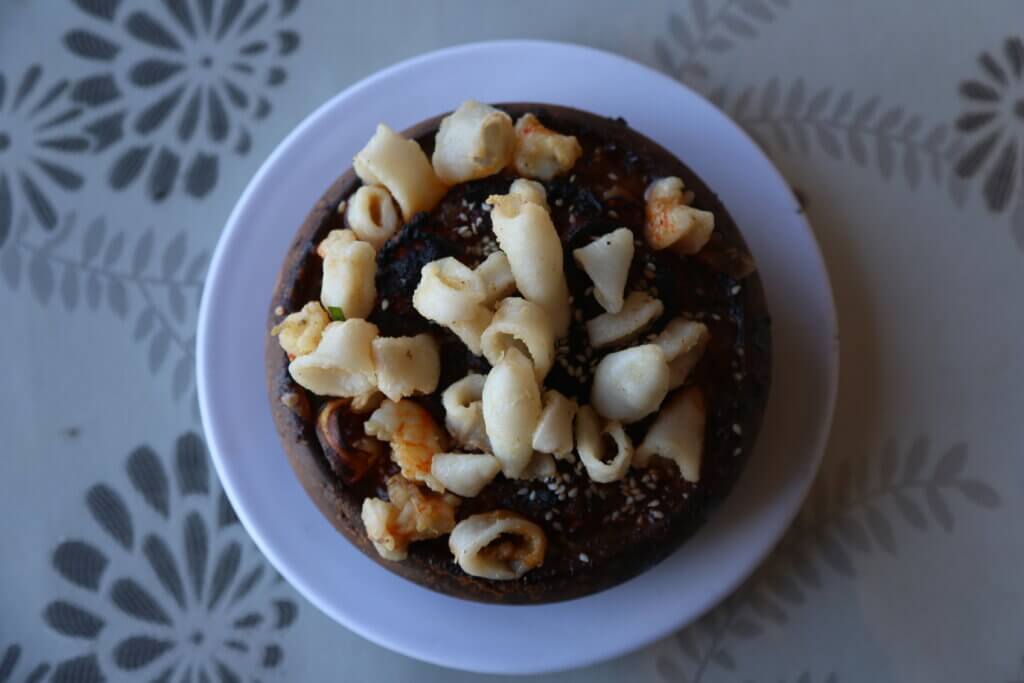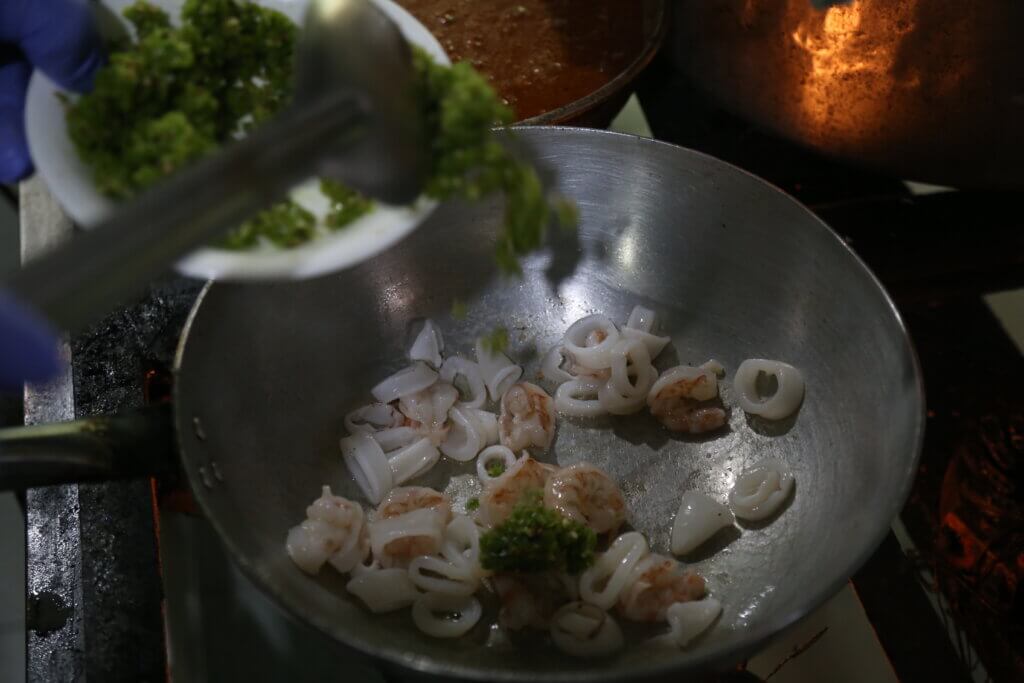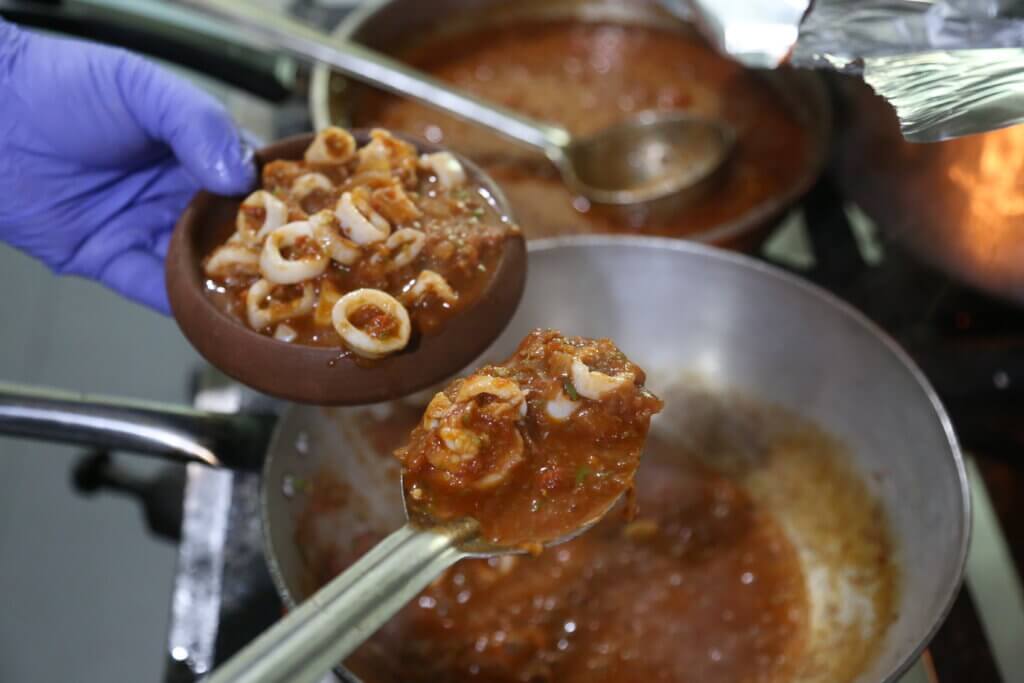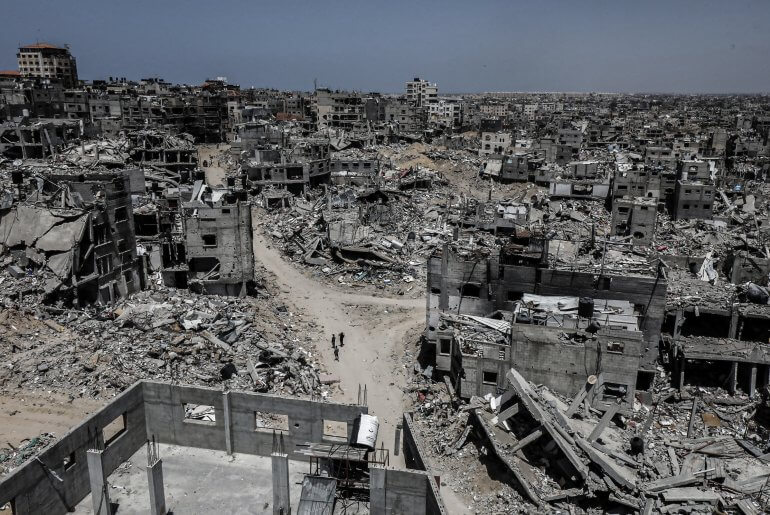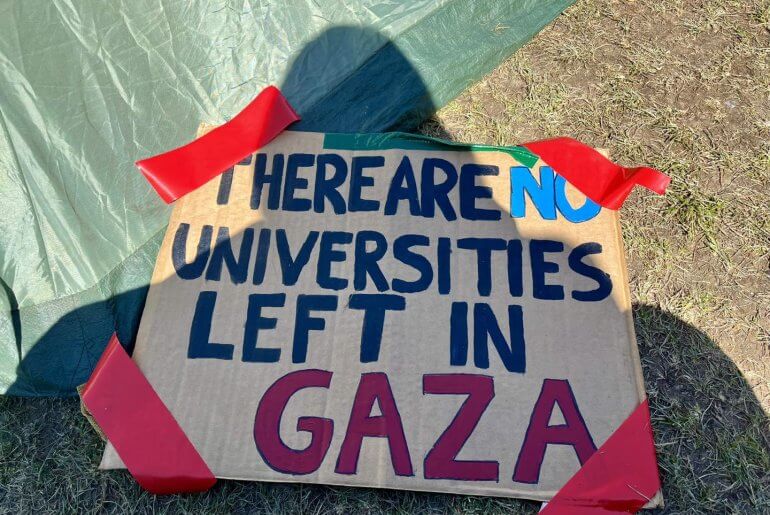It all starts on a Gaza beach at dawn. Fishermen end a full night’s work by displaying the fish they caught that night on the dock. Fish traders wait by Gaza’s seaport to advertise their freshly caught wares. A government employee, known as “al-Dallal,” organizes the process of exchange between fishermen, fishmongers, and potential customers. He jots down the price that fishermen are demanding for their fish and enters it into a bidding competition for the fish sellers. The highest price wins the fish.
Getting the freshest seafood on offer isn’t always easy. Usually, it’s preferable for the fish to still be moving, which can fetch a higher price than the other catches. This is also variable depending on the type of fish and the amount available for the merchants to buy.
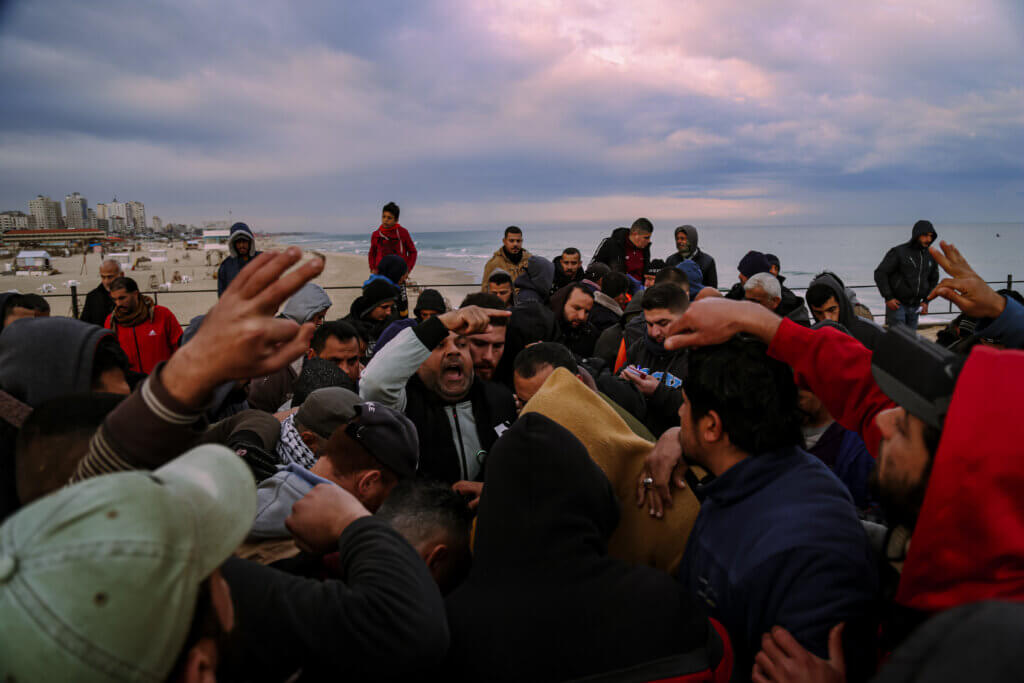
Sardines, shrimp, crab, calamari, red mullet — all of these and more can be caught within 12 nautical miles of Gaza’s coast. On a good day, fishermen are allowed 16 nautical miles outward. Sail any further, and the fishing boats are shot at by Israeli gunships. Naturally, this has limited the kinds of fish that sailors can catch, and many types of prized fish that do not swim close to shore can only be found beyond the 16 nautical mile limit.
Some of these fish, like white grouper (Epimetheus Aeneus) and shrimp scad (Alephs Djedaba), are slowly disappearing from Gaza’s cuisine due to the sea blockade imposed by Israel, forcing fishermen to catch the small fish that usually attract the bigger fish. This, in turn, has further reduced the number of large catches that end up swimming near Gaza’s coast. The result not only upsets the balance of marine life in Gaza’s waters but warps Gaza’s seafood culture as well.
“The good kinds of fish are deep in the water, after 20 and 30 miles,” Abu Ali, a 48-year-old fisherman told Mondoweiss. “But if any fisherman gets that far, or even close to it, he will be killed by the Israeli navy,” he said as he finished up work on his fishing boat after having caught 5 kg of small sardines and shrimp, which he will share with his workers.

“Even when sailors are allowed past 16 miles,” he continued, “they do not have fishing boats or spare parts for their old boats. Israel prevents the importation of appropriate tools for fishing like motors. This leaves us with the knowledge that there are wonderful kinds of fish swimming off our coast that we do not have the ability to catch,” he said.
In light of these challenges, Gaza’s cuisine has slowly adapted to the deprivation, in spite of which they have been able to offer up delicious food. The coastal strip is home to dozens of different kinds of fish, some of which can be found throughout the Mediterranean, while others are unique to Gaza’s coast.
Cosmopolitan cuisine
Palestinian cuisine is connected to Turkish and Greek cuisine via the Mediterranean, as well as through the history of Ottoman imperial rule, which spanned several continents and included the Levant, Greece, and Turkey under its fold. More recently, captains of foreign ships and their fishermen used to come to Gaza before the Israeli blockade, where they would share their food and often eat together, leading to an exchange of culinary traditions.
As for geographic location, Gaza is a place rich in fish due to the nature of the water currents off Gaza’s coast. “Gaza lies at the center of more than one direct current, known among fishermen in Gaza as the Nawah,” said As’ad Abu Hasirah, a 61-year-old retired fisherman who owns a seafood restaurant at Gaza’s seaport.
When he was a fisherman in the 70s, he used to be able to sail deep into the sea and was able to sell the fish he caught across all of historic Palestine. When Gaza was not cut off from the outside world, he would drive the fish himself to markets in different cities.
For Abu Hasirah, the decline of the fishing sector started with the Oslo Accords in 1993. Those agreements determined the space allowed for fishing, which was set unilaterally without the consultation of the fishermen themselves.
With the added restrictions imposed by the blockade, fishing is no longer a viable business for him, leading him to open up a seafood restaurant instead. Spending over 40 years beside the sea, working in catching, selling, and preparing fish, he has become a practiced cook in preparing Gaza’s famous seafood dishes.
“All that we used to know was that fish is either grilled or fried, but as fishermen, we developed our cuisine in new ways after meeting sailors from different countries,” he said as he stood in his restaurant’s kitchen and prepared a tray of spice-rubbed fish, which he would grill over hot charcoal. “As time passed, and as cultures interacted with one another, like the Greek, Turkish, and Palestinian cultures, we ended up creating our own cuisine.”

Sayyadiyah is one of the first dishes created by Palestinian fishermen in Gaza that have gained widespread popularity. “It is a rice dish mixed with different kinds of fish, like white grouper and other boneless fish, mixed with special spices,” he said. The spices are bloomed gently in heated oil in a pot, and then long-grain rice is added and lightly toasted before adding water and cooking the rice. Then different kinds of fish are added, which when mixed with the rice makes for a distinctively fragrant dish.

“We developed our cuisine over the years, and started using traditional Palestinian crockery in our dishes, inventing zibdiyet al-gambari, or shrimp bowl,” he said. “Then there is fish soup, and calamari stuffed with rice and nuts.”
As he dropped shrimp and sliced calamari into a pan with some oil, he explained how he makes zibdiyet gambari. “We make these spices by hand to give the fish a special flavor,” he said, showing a blend of cumin, cardamon, black pepper, ginger, and cinnamon. He added the spices to the sauteeing seafood and let them toast together in the hot oil. Then he added chopped onions and tomatoes, stirring constantly until the seafood was cooked and the tomatoes and onions began to melt. He transferred the dish to a clay bowl known as a zibdiyeh, hence giving the dish its name, and garnished the dish with sesame and cashews before putting it in a hot oven to char. It came out of the oven bubbling.
Abu Hasira told Mondoweiss that many of these dishes arose when fishermen would prepare food during their workday while at sea. Due to the long work hours entailed by their line of work, they would cook some of the fish they caught for a quick and nutritious meal.
Due to this long experience, fish in Gaza has become some of the most delicious and expensive fish in the Mediterranean. Another reason is that Gaza’s seaport is not full of boats like other commercial seaports — ironically, because of the blockade’s restrictions — rendering the water clean and low on oil or pollutants. This has made the fish swimming up Gaza’s coast highly sought-after.
But fishermen in Gaza prefer to export the fish they catch to make a profit, which has led to a jump in fish prices. One kilogram of shrimp, for example, costs 130 shekels, making it prohibitively expensive for most people.

“This also leaves the small fish for people here,” said Abu Hasira. “They are very small and should’ve stayed in the water, but fishermen catch them because they have nothing else to catch.”
Sardine is one of the most popular fish in Gaza because it is affordable, with one kilogram costing between 20 – 22 shekels. This is an attractive price for poor families with many mouths to feed, as they can get good value for their money and have a nutritious type of fish to boot.

The way Abu Hasira prepares it is how most people in Gaza prefer it: deep-fried and crispy. After the sardines are gutted and cleaned, they are marinated in lemon, salt, and spices for about an hour, before they are coated in flour and dropped in hot oil.
But fishermen complain that the fishing sector is fast declining, and day after day it further approaches collapse under the weight of the siege. Moreover, no official body exists in Gaza that can support fishermen.
“They ban us from getting anything that develops our work,” Abu Hasira said, referring to the siege. “Fish that live in deeper waters are not reachable, like baccala [cod], sole, al-dobee’, and al-wawi. These are the most delicious fish because they feed on rocks and seaweed. We used to catch them in Gaza, but not anymore.”
This has also affected the kinds of seafood dishes that are becoming more popular in Gaza. One of those examples is koftat samak, or mashed fish koftas. They are made with a small type of sardine that would never have been caught in Gaza before the siege. Just to make a living, fishermen are now forced to catch sardine hatchlings that would normally be left to grow much larger. These kinds of sardines are so small and delicate that they are hard to clean, and can easily break apart if not handled with care. So they end up getting chopped up into a fine paste and mixed with parsley and fish spices. The paste is then formed into fingers and deep fried until they come out resembling kebabs, but with a completely different taste.
It has become a popular favorite for many families in Gaza, as it is one of the few remaining affordable options in light of the state of Gaza’s besieged economy.

Israel’s stranglehold on the sea
Over 12 years ago, Israel started preventing materials that could be used by fishermen from entering Gaza. Fishermen have resorted to using car engines to power their boats instead, a poor and improper substitute for boat motors. Recently, Israel allowed some 25-horse motors into the Strip that could be used for fishing boats, but they did not meet the fishermen’s needs.
“The fish deeper off Gaza’s coast need powerful engines to catch them, and this is not allowed for Gaza’s fishermen,” Falah Abu Rihala, a member of the Fishermen’s Syndicate in Gaza, told Mondoweiss.
“Before the siege and the imposition of obstacles on fishermen, people used to envy us, because of our sizable income and heavy catches,” he lamented. “Now fishermen are begging for aid. This is what the Israeli siege has done to our social standard of living.”
At their prime, fishermen could rake in over 4000 shekels by the end of the month from fishing. Now, they can barely make 200 shekels.
“When we lose such a rich resource, we lose an important part of our food culture. The siege pushed Gaza toward isolation from land, air, and sea,” he added.
Abu Rihala expects that most of the fishing boats in the Gaza seaport will be out of service in the next few years, as their parts become progressively worn out and fall into disrepair. This leaves the Gaza fishing industry with an uncertain future.
Farming fish next to the sea
In the center of the Gaza Strip, a few meters away from the beach, engineer Yasser al-Haj established his first fish farm in 2014 in light of Israel’s heavy restrictions on Gaza’s fishing industry. He realized that many types of fish for which Gaza used to be famous are now nowhere to be found in Gaza’s seaports.
His farm contains dozens of large pools, where fish grow next to the sea. The farm focuses on producing one kind of fish, known locally as dinees, or sea bream. When the farm was first established, it produced 80,000 kilograms of fish every year. Now it produces 220,000 kilos in 2 separate farms. In the future, al-Haj plans to expand production to 320,000 kilos. But 75% of this fish is exported to the West Bank, while only 25% of it is consumed locally in Gaza.
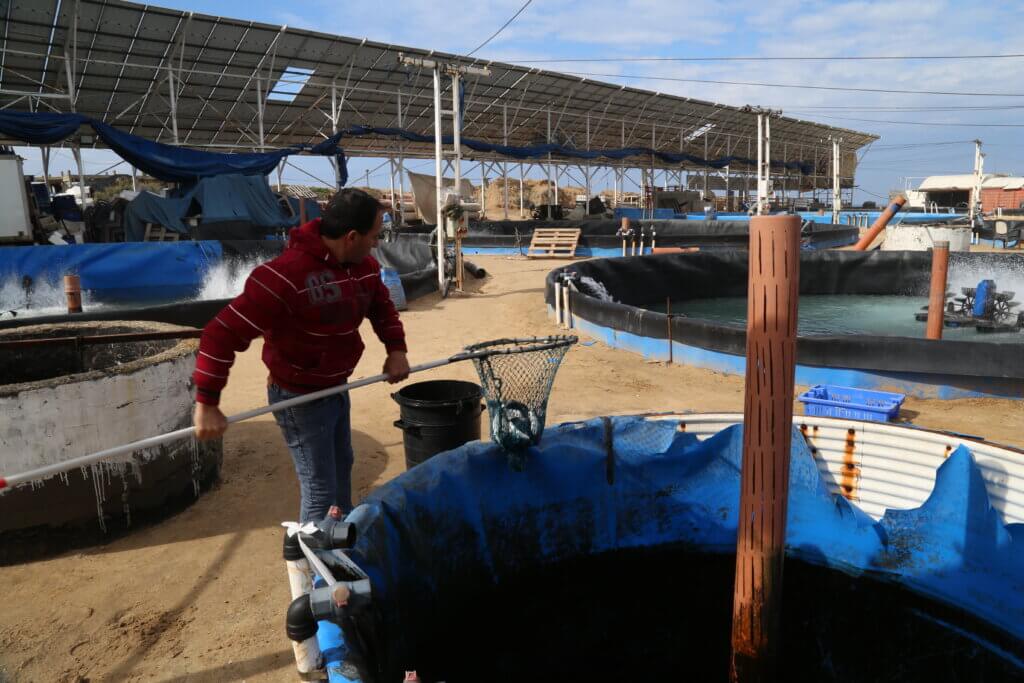
The farms used to depend on importing fish roe from Israel, but in 2018 they establish a lab to produce the eggs in Gaza as well.
“We have 6 technicians and microbiologists working in the lab, and we produce all the roe in Gaza,” al-Haj told Mondoweiss.
Yet even though the fish is farmed, that doesn’t mean the siege hasn’t affected the business.
“We still depend on importing Israeli fodder for the fish in our farms,” al-Haj clarified.
Moreover, when these farms want to export large shipments of fish to the West Bank, they remain at the mercy of the whims of Israeli border control. Whenever a “security event” occurs in Gaza, the border closes, and thousands of kilograms of fish sit rotting at the border crossing. They end up selling the fish at half price in Gaza’s markets.

But fish farms are catching on in popularity in Gaza, and many people will visit a fish farm to pick out their own fish while they are alive and moving. The farms also end up linking with seafood restaurants on the beach, which are having to cut costs in light of the rising price of fresh fish. The irony is not lost on people in Gaza, who have long prided themselves on their rich seafood culture, but the farming phenomenon is the direct result of the Israeli policy of strangulation.
“Gaza’s people deserve nothing but the best fish. They don’t deserve to eat frozen fish or even farmed fish when their sea is home to the best in the world. But unfortunately, we’re forced to live with the impact of the siege, which is to deprive us of our own sea,” Abu Hasira told Mondoweiss.
A once cosmopolitan seaport, the Gaza Strip used to be a place where new types of seafood culture would constantly emerge and be reinvented, in large part due to the interaction of Gaza’s fishermen with fishermen from other places and cultures across the Mediterranean. Now fishermen in Gaza are barely able to discover the kinds of fish that swim just a few miles off their shores.
Tareq S. Hajjaj
Tareq S. Hajjaj is the Mondoweiss Gaza Correspondent and a member of the Palestinian Writers Union. He studied English Literature at Al-Azhar University in Gaza. He started his career in journalism in 2015 working as a news writer/translator at the local newspaper Donia al-Watan. He has reported for Elbadi, Middle East Eye, and Al-Monitor. Follow him on Twitter at @Tareqshajjaj.
